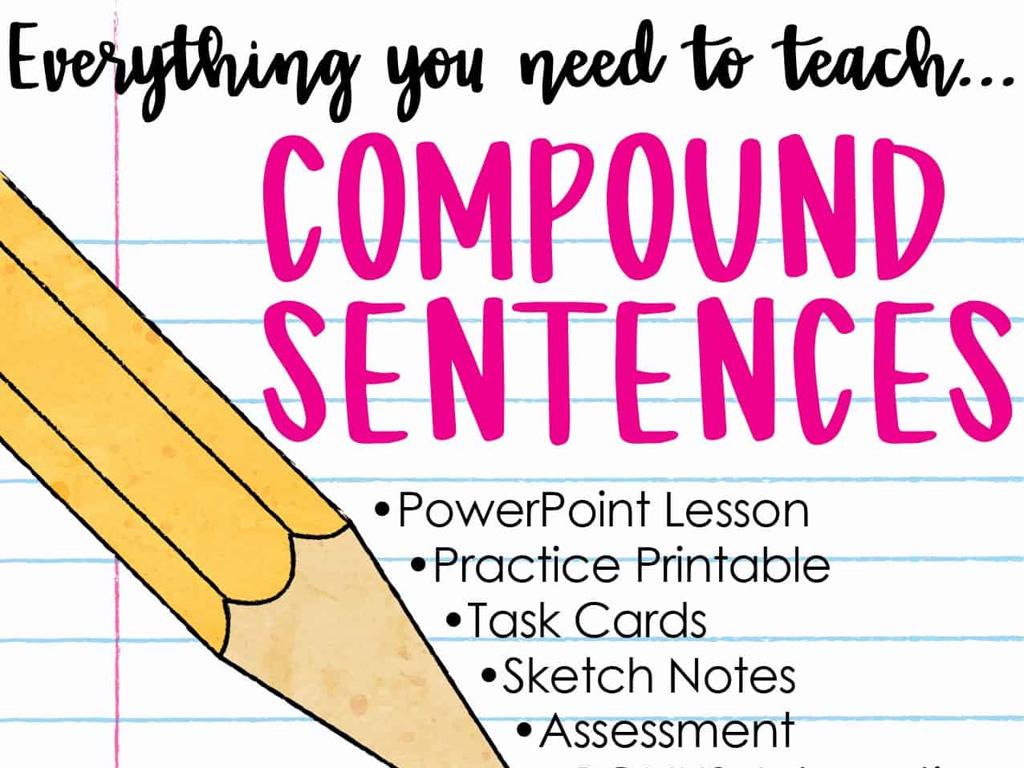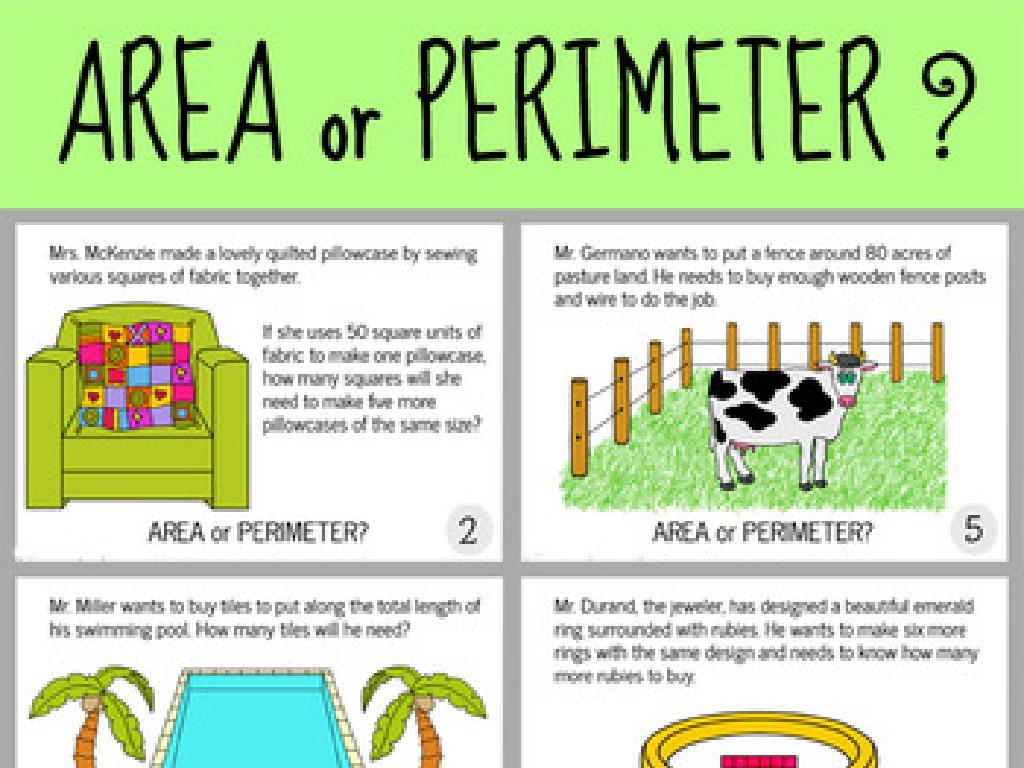Estimate Sums And Differences Of Whole Numbers
Subject: Math
Grade: Fifth grade
Topic: Addition And Subtraction
Please LOG IN to download the presentation. Access is available to registered users only.
View More Content
Introduction to Estimation
– What is estimation?
– Estimation is finding a number close to the exact amount.
– Estimation in daily life
– Useful for quick calculations, like in shopping or cooking.
– Exact vs. Estimated numbers
– Exact numbers are precise, estimates are close approximations.
– Practice estimation skills
|
This slide introduces the concept of estimation, which is a fundamental skill in mathematics and daily life. Estimation allows us to quickly find a number that is close enough to the exact amount without needing a precise calculation. It’s particularly useful in situations where speed is more important than accuracy, such as making sure you have enough money to pay for groceries or estimating the time it will take to travel somewhere. Understanding the difference between exact and estimated numbers is crucial for students, as it helps them decide when it’s appropriate to use each type. Encourage students to think of times when they have used estimation in their lives. To reinforce the concept, have students practice by estimating sums and differences of whole numbers in various exercises.
Estimating Sums with Whole Numbers
– Learn to round numbers
– Round to the nearest ten or hundred to simplify
– Add rounded numbers for sums
– After rounding, add the numbers together
– Example: 453 + 299 estimate
– Round 453 to 450 and 299 to 300, then add
– Practice with similar problems
|
This slide introduces students to the concept of estimation, a valuable skill for quickly assessing the sum of whole numbers. Begin by explaining rounding rules: if a digit is 5 or more, round up; if it’s 4 or less, round down. Show how to round numbers to the nearest ten or hundred before adding them. Use the example provided to demonstrate the process step by step. After rounding 453 to 450 and 299 to 300, students will see that the estimated sum is 750. Encourage students to practice this technique with various numbers to become comfortable with estimation. Provide additional examples and exercises for them to work on as homework or in class.
Estimating Differences
– Learn to round numbers for estimates
– Round to the nearest ten or hundred to simplify
– Subtract rounded numbers for difference
– Use rounded figures to find an approximate difference
– Example: Estimate 816 – 237
– Round 816 to 820 and 237 to 240, then subtract: 820 – 240 = 580
|
This slide aims to teach students the concept of estimating differences by rounding numbers. Start by explaining the importance of rounding to the nearest ten or hundred as a way to simplify calculations. Then, demonstrate how to subtract these rounded numbers to find an estimated difference. For example, show students how to round 816 to 820 and 237 to 240, and then subtract the rounded numbers to estimate the difference. This method provides a quick way to calculate without needing the exact answer, which can be particularly useful in everyday situations where an approximate value is sufficient. Encourage students to practice with additional examples and to understand that estimation is a valuable skill in both math and real-life scenarios.
Rules of Thumb for Estimation
– Understanding when to round numbers
– Round down if the digit is less than 5, round up if 5 or more.
– Using estimation for answer reasonableness
– After solving, estimate to check if the answer is logical.
– Practice estimation with examples
– Let’s estimate if 500 + 600 is closer to 1,000 or 1,200.
– Estimating: 500 + 600
– Is the sum closer to 1,000 or 1,200? Let’s estimate!
|
This slide introduces students to the concept of estimation, which is a critical skill in mathematics for making quick and reasonable calculations. Emphasize the importance of knowing when to round numbers up or down based on the digit. Teach students how to use estimation to quickly check their work for errors and to ensure their answers make sense in context. For the practice example, guide students through the process of estimating the sum of 500 and 600, reinforcing the concept that estimation helps in making fast and efficient decisions in math. Encourage students to explain their reasoning and discuss as a class why the estimated sum is closer to one number than the other.
Estimation in Real Life: Shopping Math
– Estimation in daily life
– Use estimation to make quick decisions
– Estimate costs during shopping
– Round prices and add while in store
– Activity: Grocery list estimation
– Estimate total grocery bill before checkout
|
This slide introduces students to the practical application of estimation in everyday life, particularly in managing finances while shopping. Begin by explaining how estimation is a useful skill for making quick, reasonable decisions without needing exact numbers. Demonstrate how to round to the nearest ten or hundred to estimate the total cost of items while shopping. For the activity, provide students with a mock grocery list and ask them to estimate the total cost by rounding the price of each item. This exercise will help them practice estimation and understand its value in daily activities. Encourage students to share their estimation strategies and discuss any challenges they faced during the activity.
Class Activity: Estimation Station
– Break into small groups
– Receive estimation problems
– Use rounding for estimates
– Round numbers to the nearest ten or hundred to simplify
– Present and explain reasoning
– Share your group’s results and discuss how you got them
|
This activity is designed to encourage collaborative learning and to enhance the students’ estimation skills. Divide the class into small groups to foster teamwork. Each group will be given a set of problems where they will practice estimating sums and differences by rounding numbers to the nearest ten or hundred. After completing the problems, each group will present their estimates to the class and explain the process they used to arrive at their answers. This will not only help students understand the concept of estimation but also improve their communication and reasoning skills. For the teacher: Prepare diverse sets of problems with varying difficulty to cater to different skill levels within the class. Encourage groups to discuss their strategies and ensure that each member understands the process.






